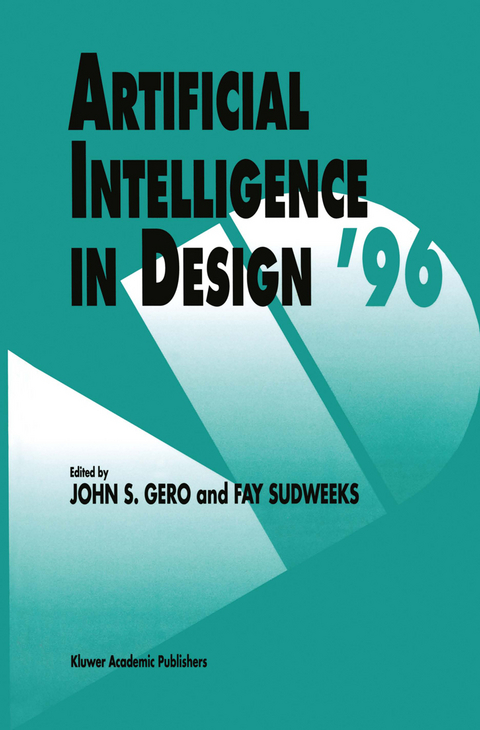
Artificial Intelligence in Design ’96
Springer (Verlag)
978-94-010-6610-5 (ISBN)
1 Representations in Design.- Multi-level molecular representation.- Text analysis for constructing design representations.- Learning genetic representations as alternative to hand-coded shape grammars.- 2 Design Objects.- Reactive design agents in solid modelling.- A framework for design object evolution.- Creating design objects from cases for interactive spatial composition.- 3: Genetic Algorithms/Genetic Programming in Design.- Integrating a genetic algorithm into a knowledge-based system for ordering complex design processes.- AI in control system design using a new paradigm for design representation.- Automated design of both the topology and sizing of analog electrical circuits using genetic programming.- 4: Case-Based Design.- A study of case adaptation systems.- Applying formal methods to case based design aids.- Designing nutritional menus using case-based and rule-based reasoning.- 5: Reuse of Designs.- On design formalization and retrieval of reuse candidates.- Design rationale and design patterns in reusable software design.- Constraint-based retrieval of engineering design cases.- 6: Grammars in Design.- A networks approach for representation and evolution of shape grammars.- Variable-complexity evolution of shape grammars for engineering design.- Grammars for machine design.- 7: Design Spaces.- Design sheet: A system for exploring design space.- Using modeling knowledge to guide design space search.- Explanatory interface in interactive design environments.- 8: Learning in Design.- Learning by single function agents during spring design.- A machine learning approach to design automated classification, association and retrieval.- Learning to choose a reformulation for numerical optimization of engineering design.- 9: Distributed Design.- Virtual building site: Supporting building design by multiple methods in FABEL.- A mobile-agent oriented approach to a distributed design support system.- VisionManager: A computer environment for design evolution capture.- 10: Rules, Models and Theories in Design.- Elicitation of rules for graphic design evaluation.- A model-based tool for finding faults in hardware designs.- On knowledge level theories of design process.- 11: Conceptual Design.- A representation scheme to support conceptual design of mechatronic systems.- Generating conceptual solutions on FuncSION: Evolution of a functional synthesiser.- Adopting a minimum commitment principle for computer aided geometric design systems.- 12: Spatial and Layout Planning in Design.- The generation of form using an evolutionary approach.- Evolutionary layout design.- DOM-ARCADE: Assistance services for construction, evaluation, and adaptation of design layouts.- 13: Creativity and Innovation in Design.- Emergent behaviour in co-evolutionary design.- Innovative design based on sharable physical knowledge.- Assisting creativity by composite representation.- Skeleton-based techniques for the creative synthesis of structural shapes.- First author electronic addresses.- Author index.
| Zusatzinfo | XI, 782 p. |
|---|---|
| Verlagsort | Dordrecht |
| Sprache | englisch |
| Maße | 160 x 240 mm |
| Themenwelt | Kunst / Musik / Theater ► Design / Innenarchitektur / Mode |
| Informatik ► Theorie / Studium ► Künstliche Intelligenz / Robotik | |
| Informatik ► Weitere Themen ► CAD-Programme | |
| Technik | |
| ISBN-10 | 94-010-6610-8 / 9401066108 |
| ISBN-13 | 978-94-010-6610-5 / 9789401066105 |
| Zustand | Neuware |
| Informationen gemäß Produktsicherheitsverordnung (GPSR) | |
| Haben Sie eine Frage zum Produkt? |
aus dem Bereich


